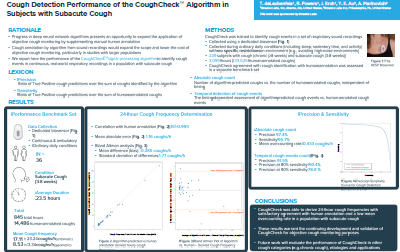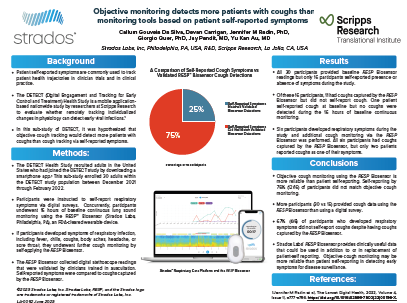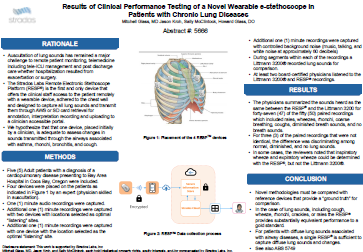For Pulmonary Fibrosis
Objectively measure cough in pulmonary fibrosis patients
Cough is widely rated among the top symptoms by patients that impact their quality of life1. Yet, cough is often overlooked in clinical trials for pulmonary fibrosis, with an unmet need for effective treatments.
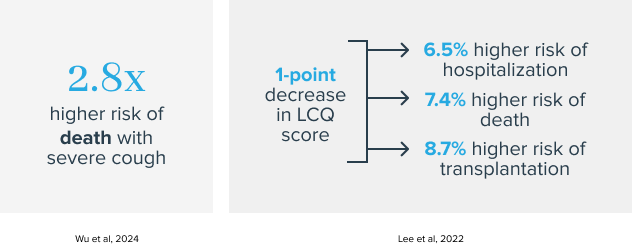
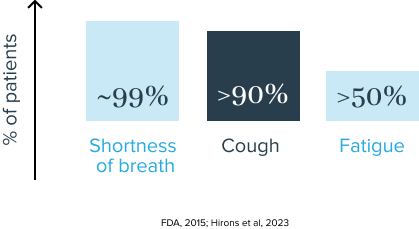
While pulmonary function tests remain the primary outcome measure for pulmonary fibrosis treatments, more emphasis from regulators continues to be placed on measuring how patients feel, function and survive5. Cough monitoring has emerged as common practice in clinical trials for IPF treatments to better demonstrate improvement into health-related quality of life.
The RESP® Platform for Cough Monitoring
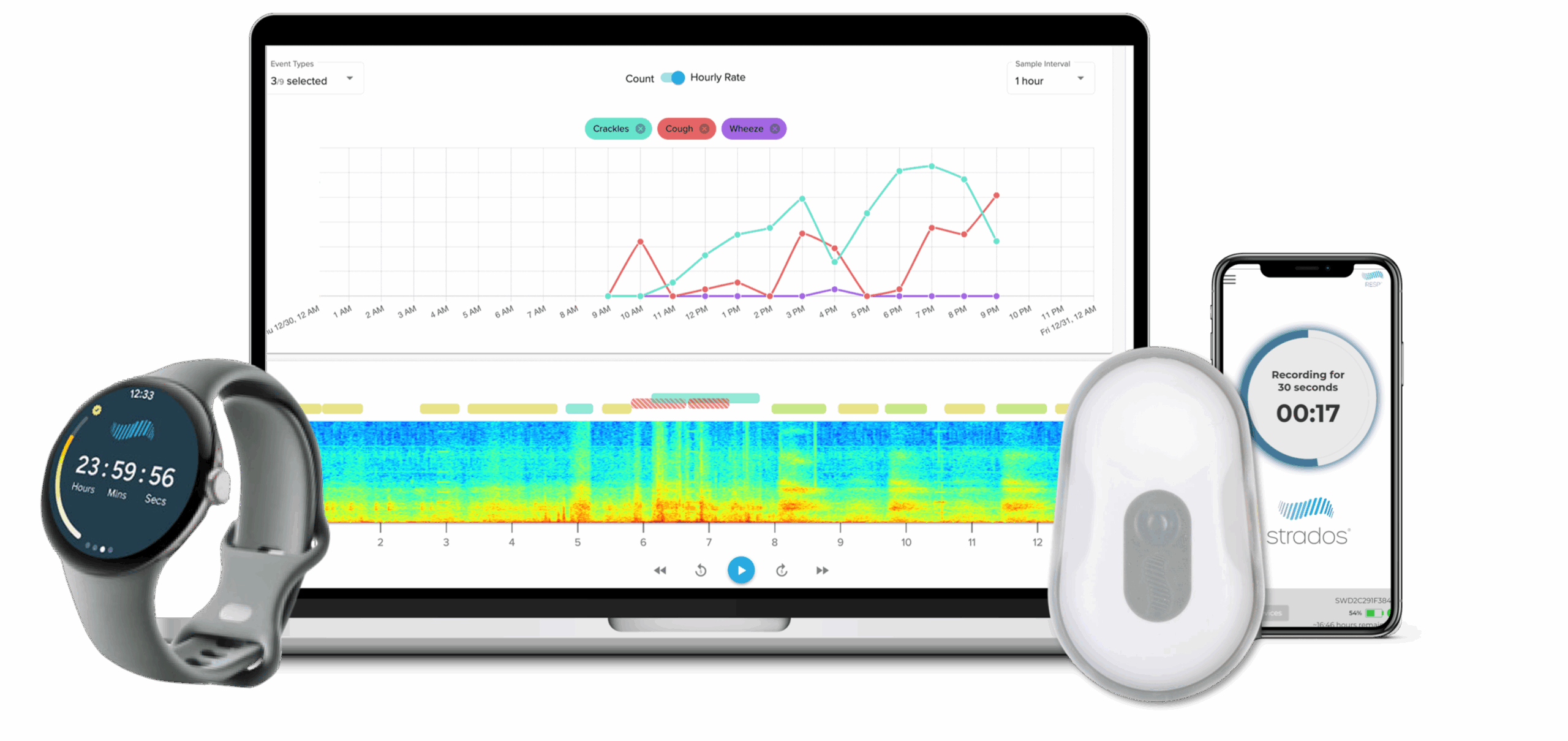
The RESP® Platform is a next-generation, high-fidelity cough monitoring system designed to provide greater insight into patient cough burden in daily life. Our technology offers:
- Flexible device selection for various cough monitoring applications
- Direct cloud syncs that expedite analysis of cough measures and streamline patient reports
- Comprehensive cough insights such as cough frequency, bouts and intensity
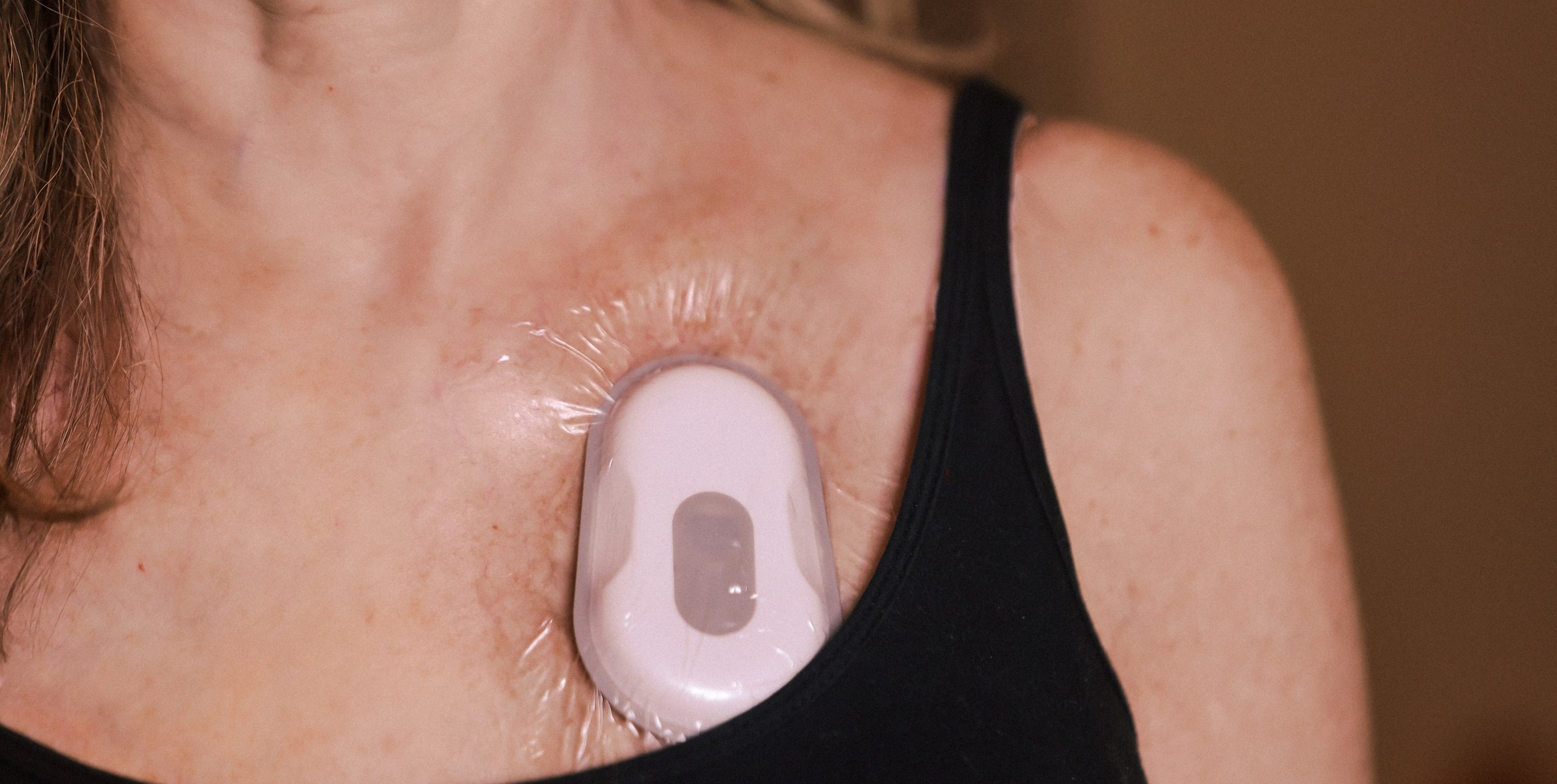
RESP® Biosensor
FDA-cleared medical device designed for high-fidelity, multi-dimensional cough monitoring.
- 24-hour cough frequency
- Cough sound intensity
- Cough bouts
- Sleep/wake*
- Activity levels*
- FDA 510(k) Clearance
- CE-marking
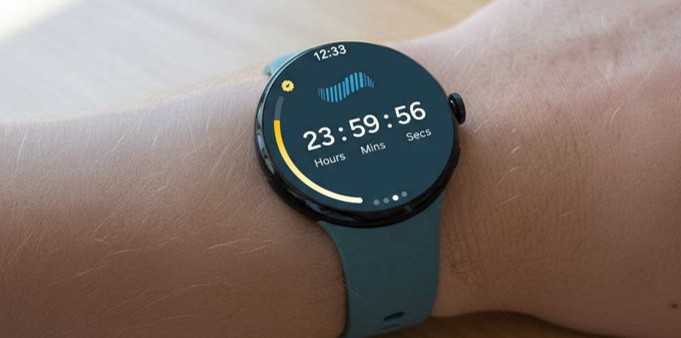
Watch-Based Cough Monitoring
Wrist-based device designed for seamless, multi-day cough monitoring. For research use only.
- 24-hour cough frequency*
- Cough bouts*
- Heart Rate*
- Respiratory Rate*
- SPO2*
- Skin temperature*
- Sleep Stages*
*Measurement not FDA cleared but may be used in clinical trials
Interested in a Research Collaboration?
We’re seeking clinical and academic collaborators to explore how wearable respiratory technologies can improve patient outcomes. Partners may be eligible for in-kind support.
Device Selection for Varying Applications
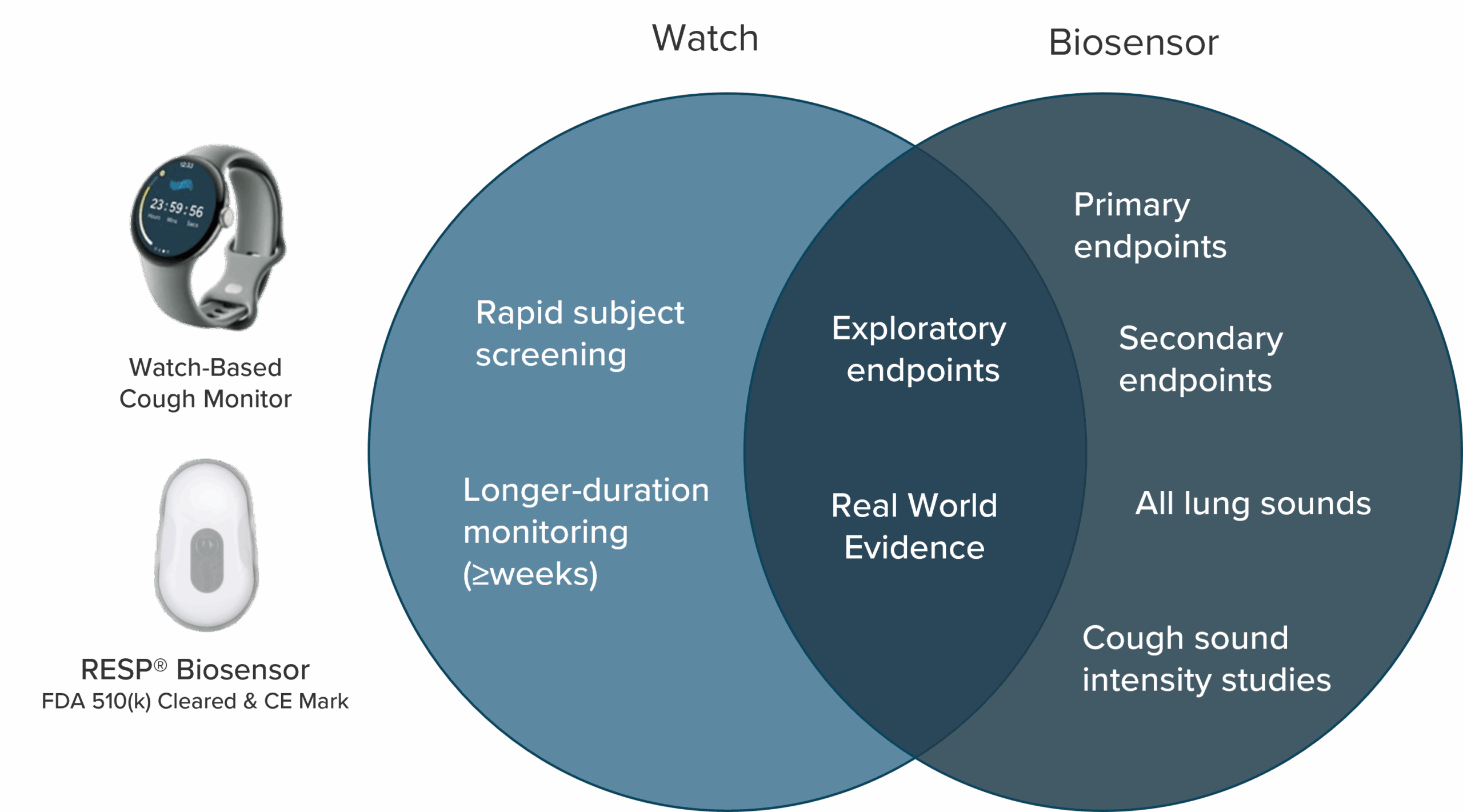
Publications
What data does the device collect in IPF patients?
The RESP® Biosensor sits on the patient’s chest wall and passively records patient’s lung sounds including cough, wheeze and crackles. The device also collects motion data to capture respiratory rate*, heart rate*, activity levels*, and body positioning*.
*Measurement not FDA-cleared
How do you know that the RESP® Biosensor is accurate?
The RESP Biosensor has received two FDA 510(k) clearances to record lung sounds. In order to receive FDA clearance, Strados Labs provided test results that demonstrated audio performance that is substantially equivalent to commercially available electronic stethoscopes.
How is the device adhered to patients’ chests? Does it cause any discomfort?
The non-invasive RESP® Biosensor is placed over the skin and adhered via Tegaderm–acrylic based adhesive. Patients often forget the device is on when wearing and can go on with their daily routines.
Let’s Connect
Explore using the RESP® Biosensor in your practice or study
References
- Lee et al. (2022). Cough-Specific Quality of Life Predicts Disease Progression Among Patients With Interstitial Lung Disease: Data From the Pulmonary Fibrosis Foundation Patient Registry. Chest, 162(3), 603–613. https://doi.org/10.1016/j.chest.2022.03.025
- Cox, I. A., Borchers Arriagada, N., de Graaff, B., Corte, T. J., Glaspole, I., Lartey, S., Walters, E. H., & Palmer, A. J. (2020). Health-related quality of life of patients with idiopathic pulmonary fibrosis: a systematic review and meta-analysis. European respiratory review : an official journal of the European Respiratory Society, 29(158), 200154. https://doi.org/10.1183/16000617.0154-2020
- Wu et al. (2024). Cough Severity Visual Analog Scale Assesses Cough Burden and Predicts Survival in Idiopathic Pulmonary Fibrosis. American journal of respiratory and critical care medicine, 209(9), 1165–1167. https://doi.org/10.1164/rccm.202311-2169LE
- Wijsenbeek, et al. (2023). Home monitoring in interstitial lung diseases. The Lancet. Respiratory medicine, 11(1), 97–110. https://doi.org/10.1016/S2213-2600(22)00228-4
- Raghu et al. (2024). Meaningful Endpoints for Idiopathic Pulmonary Fibrosis (IPF) Clinical Trials: Emphasis on ‘Feels, Functions, Survives’. American journal of respiratory and critical care medicine. 209. 10.1164/rccm.202312-2213SO; Wijsenbeek, et al. (2023). Home monitoring in interstitial lung diseases. The Lancet. Respiratory medicine, 11(1), 97–110. https://doi.org/10.1016/S2213-2600(22)00228-4
- Moran-Mendoza, O., Ritchie, T., & Aldhaheri, S. (2021). Fine crackles on chest auscultation in the early diagnosis of idiopathic pulmonary fibrosis: a prospective cohort study. BMJ open respiratory research, 8(1), e000815. https://doi.org/10.1136/bmjresp-2020-000815
- Sgalla, G., Walsh, S. L. F., Sverzellati, N., Fletcher, S., Cerri, S., Dimitrov, B., Nikolic, D., Barney, A., Pancaldi, F., Larcher, L., Luppi, F., Jones, M. G., Davies, D., & Richeldi, L. (2018). “Velcro-type” crackles predict specific radiologic features of fibrotic interstitial lung disease. BMC pulmonary medicine, 18(1), 103. https://doi.org/10.1186/s12890-018-0670-0
